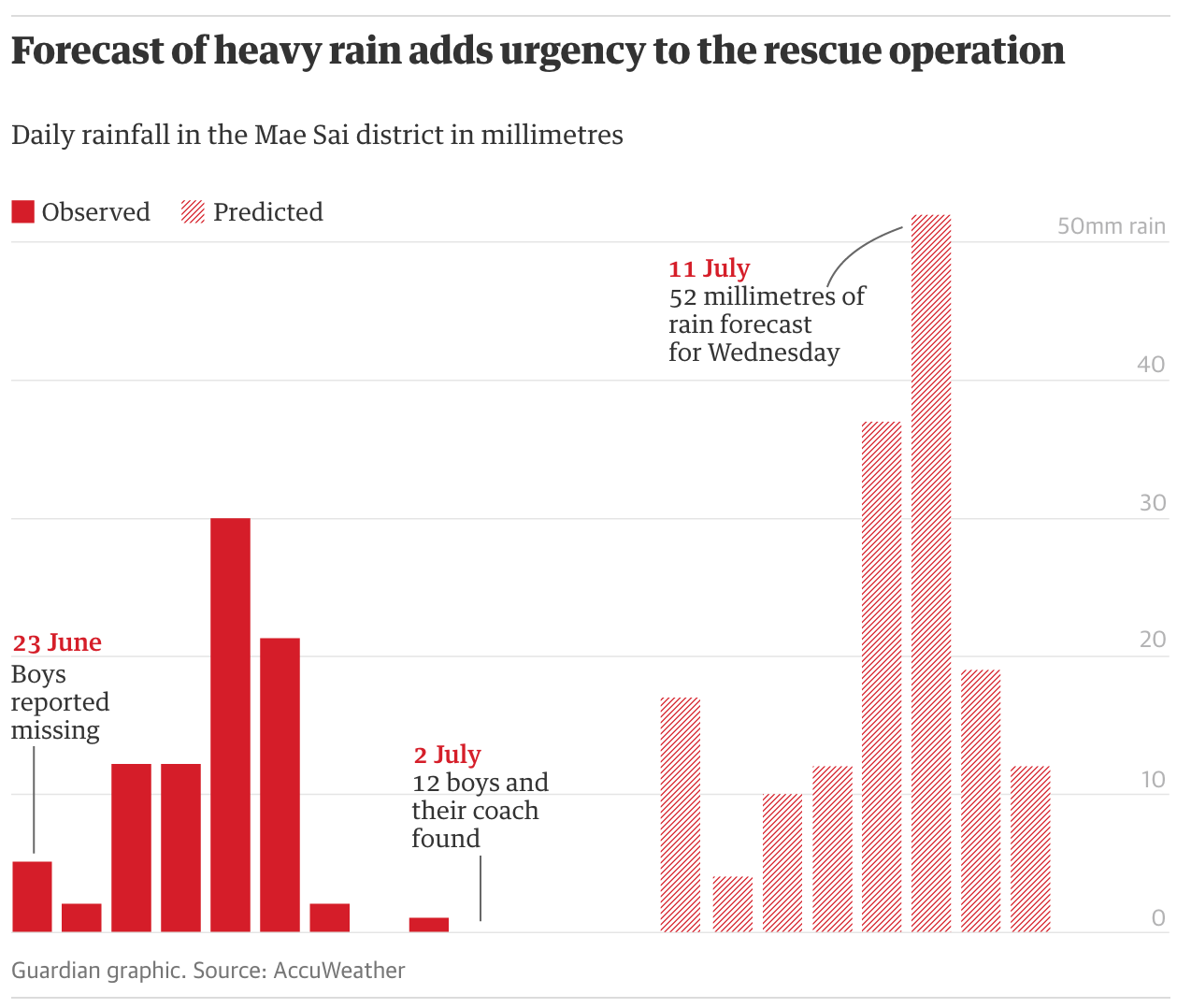As of publishing, eight of the 12 Thai boys who became stranded with their coach deep inside a flooded cave network have been rescued. The perilous operation to extract them continues as rescuers continue to pump round the clock and rainy weather moves in to threaten the operation.
The Moo Pa (Wild Boars) academy team, whose ages range from 11 to 16, became trapped with their 25-year-old coach, Ekaphol Chantawong, inside the six-mile Tham Luang cave in the Doi Nang Non mountain range.
How does the rescue work?
Two rescue missions on Sunday and Monday safely recovered four boys each; the eight were taken directly to hospital. But getting to the boys and back is an 11-hour round trip.
Each boy is being accompanied by two divers. A doctor with cave-diving experience earlier went into the chamber and approved them for the operation; the boys’ parents say they were told that the strongest boys would be taken out first.
From our partners:
Round-the-clock efforts to pump water out of the cave appear to have paid off with conditions said to be walkable in some parts of the 1.7km passageway between the third chamber and the ledge where the team were found sheltering on 2 July.
The death on Friday of Saman Kunan, a former Thai navy seal, starkly illustrated how dangerous any rescue involving diving apparatus could be. Kunan died from a lack of air while replenishing air tanks between the cave’s third chamber and the landmark Monk’s Junction.
Rescue divers have already fixed guide ropes along the passageways, which are being used to navigate the team out. It is understood the boys are receiving air from a navy diver’s supply.
With further monsoon rains forecast, officials knew the window in which they could launch a rescue operation was diminishing. Another deluge risked stranding the group for months, which would mean drilling a shaft into the cave became the only prospect of rescuing the team before the end of the monsoon season. After Kunan’s death concerns also grew about the quality of air inside the cave.
The dangers are also set out in this visualisation of storm intensity for the coming days.


- The main entrance to the six-mile cave. Bicycles and football kit were found after a mother reported her son missing on 23 June. The Wild Boars had cycled there with their coach after a training session. A sign outside warns against entering the cave during the rainy season.
- Early rescue efforts were based in chambers nearer the cave’s entrance. These operations were hampered by the rising flood water, which is believed to have forced the boys further inside the network of narrow caverns and passageways.
- Monk’s Junction, 1,500 metres from the entrance, was reached on 1 July. Changing weather conditions and pumping helped reduce water levels and improve visibility, allowing divers to fix guide ropes.
- A landmark area of higher ground known as Pattaya Beach was where rescuers first hoped the team would be found. But when they reached it on 2 July, rescuers found the ‘beach’ was also flooded.
- The boys were then located a short distance further on, sheltering on a ledge surrounded by water, 2km (1.24 miles) from the main entrance and up to 1km below the surface. After their discovery by two specialist cave divers from the UK, the Wild Boars were visited by medics and other rescuers who supplied food and water.

This feature is written by Seán Clarke, Paul Torpey, Paul Scruton, Michael Safi, Daniel Levitt, Pablo Gutiérrez and Chris Watson. Originally appeared in The Guardian.





















